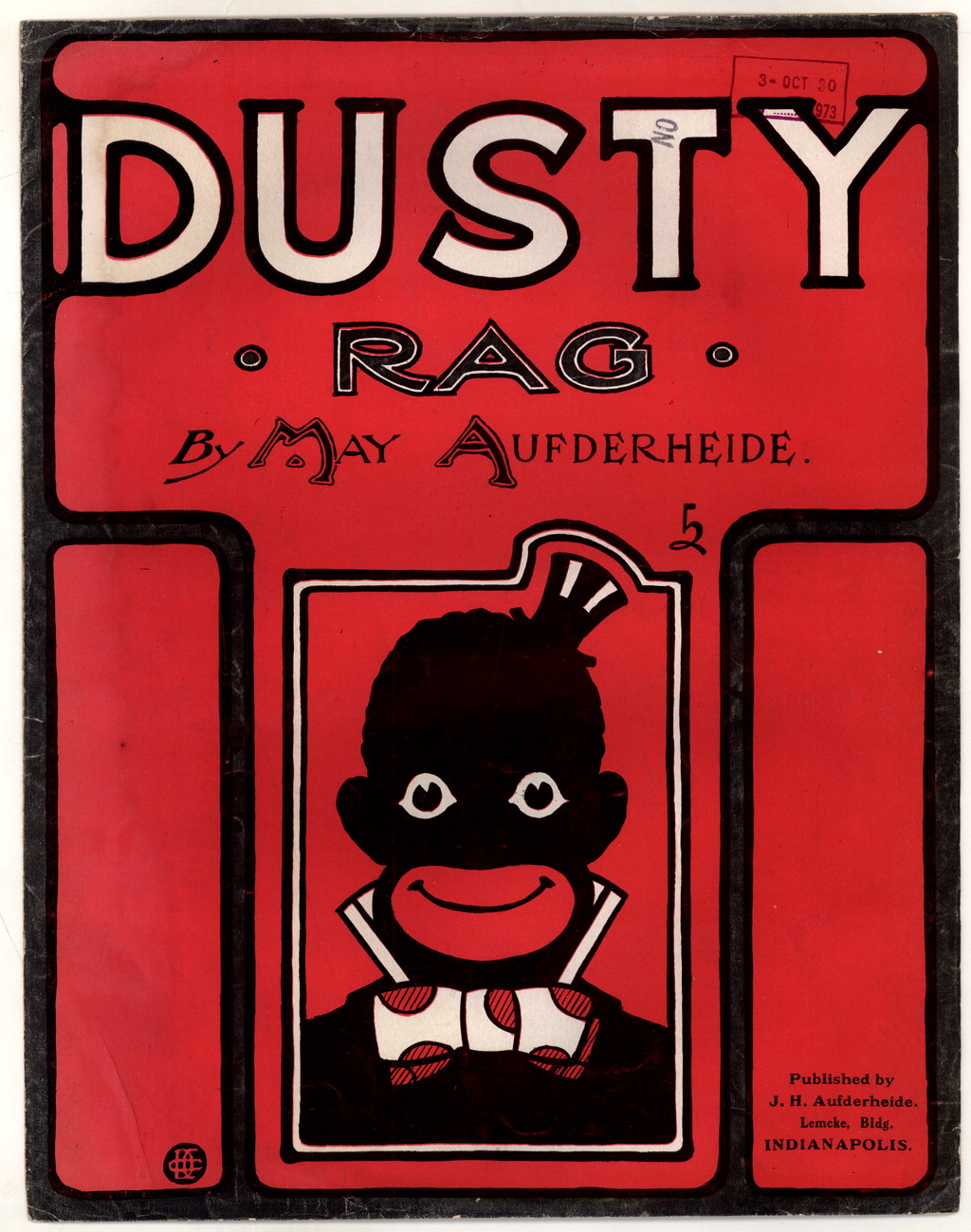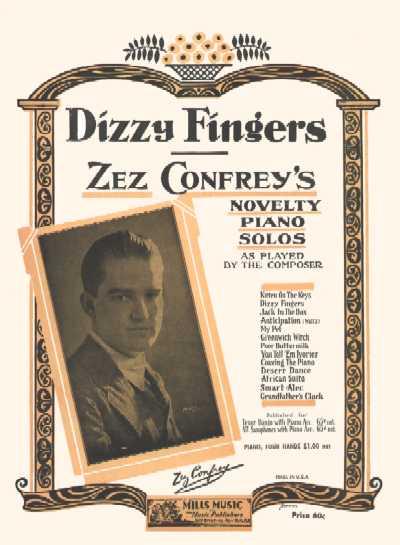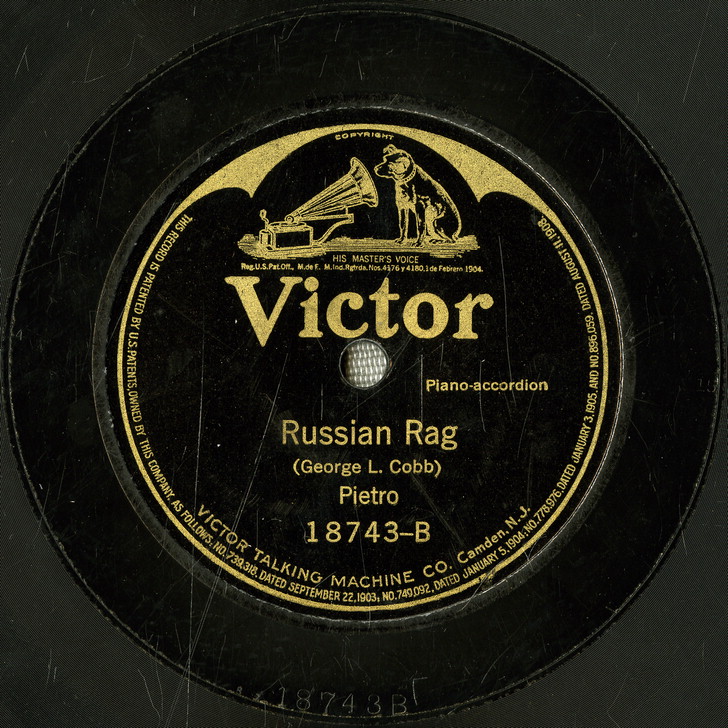|
List Of Ragtime Composers
A list of ragtime composers, including a famous or characteristic composition. Pre-1940 *Felix Arndt (1889–1918), "Nola" (1916) *May Aufderheide (1888–1972), "Dusty Rag" (1908) *Roy Bargy (1894–1974), "Pianoflage" (1922) * Harry Belding (1882–1931), "Good Gravy Rag" (1913) * Theron C. Bennett (1879–1937), "The St. Louis Tickle" (1904) *Irving Berlin (1888–1989), "Alexander's Ragtime Band" (1911) * Charlotte Blake (1885–1979), "That Poker Rag" (1909) *Eubie Blake (1887–1983), "Charleston Rag" (1917) * Rube Bloom (1902–1976), "Soliloquy" (1926) *Blind Boone (1864–1927), "Southern Rag Medley No. 2" (1909) *George Botsford (1874–1949), "Black and White Rag" *Euday L. Bowman (1887–1949), "Twelfth Street Rag" (1914) * Fleta Jan Brown, (1882–1938), "Tanglefoot Rag" (1907) *Brun Campbell (1884–1952), "Barber Shop Rag" *Hughie Cannon (1877–1912), " (Won't You Come Home) Bill Bailey" (1902) *Louis Chauvin (1881–1908), "Heliotrope Bouquet" (1907) *Axel Christen ... [...More Info...] [...Related Items...] OR: [Wikipedia] [Google] [Baidu] |
Ragtime
Ragtime, also spelled rag-time or rag time, is a musical style that flourished from the 1890s to 1910s. Its cardinal trait is its syncopated or "ragged" rhythm. Ragtime was popularized during the early 20th century by composers such as Scott Joplin, James Scott and Joseph Lamb. Ragtime pieces (often called "rags") are typically composed for and performed on piano, though the genre has been adapted for a variety of instruments and styles. " Maple Leaf Rag", " The Entertainer", "Fig Leaf Rag", "Frog Legs Rag", and "Sensation Rag" are among the most popular songs of the genre. The genre emerged from African American communities in the Southern and Midwestern United States, evolving from folk and minstrel styles and popular dances such as the cakewalk and combining with elements of classical and march music. Ragtime significantly influenced the development of jazz. In the 1960's, the genre had began to be revived with the publication '' The All Played Ragtime'' and artists re ... [...More Info...] [...Related Items...] OR: [Wikipedia] [Google] [Baidu] |
Fleta Jan Brown Spencer
Fleta Jan Brown Spencer (March 8, 1882 – September 2, 1938) was an American songwriter, composer, pianist, and singer. Early life Fleta Jan Brown was born near Sioux Rapids, Iowa, the daughter of William Edward Brown and Jennie Etta Watkins Brown. Her father was a barber. She trained as a pianist and composer at the Cincinnati Conservatory of Music.Edwards, Bill"Fleta Jan Brown Spencer"''RagPiano.com.'' Career Brown moved to St. Louis, Missouri, after her studies in Cincinnati, and published her first three songs in 1905. After she married fellow songwriter Herbert Spencer, the pair moved to New York, and there were prolific songwriters, sharing credit on dozens of songs published by M. Witmark & Sons, and by Jerome H. Remick. They also performed together at times, both as singers and pianists, in concerts and on the vaudeville stage. Songs with music, lyrics, or both by Brown included "Tangle Foot Rag" (1907), "Fancies" (1908), "I Wish I was in Heaven Sittin' Down" (1908) ... [...More Info...] [...Related Items...] OR: [Wikipedia] [Google] [Baidu] |
Ford Dabney
Ford Thompson Dabney (15 March 1883 – 6 June 1958) was an American ragtime pianist, composer, songwriter, and acclaimed director of bands and orchestras for Broadway musical theater, revues, vaudeville, and early recordings. Additionally, for two years in Washington, from 1910 to 1912, he was proprietor of a theater that featured vaudeville, musical revues, and silent film. Dabney is best known as composer and lyricist of the 1910 song " That's Why They Call Me Shine," which for decades, through , has endured as a jazz standard. As of 2020, in the jazz genre, "Shine" has been recorded 646 times Dabney and one of his chief collaborators, James Reese Europe (1880–1919), were transitional figures in the prehistory of jazz that evolved from ragtime (which loosely includes some syncopated music) and blues — and grew into stride, boogie-woogie, and other next levels in jazz. Their 1914 composition, "Castle Walk" – recorded February 10, 1914, by Europe's Society Orchestra with ... [...More Info...] [...Related Items...] OR: [Wikipedia] [Google] [Baidu] |
Cecil Duane Crabb
Cecil Duane Crabb (May 23, 1890 – April 27, 1953) was an American composer of ragtime music and a member of Indianapolis group of ragtime composers. He was born in Centerville, Indiana to James and Sarah E. Crabb. He moved to Indianapolis in 1908. Crabb composed only four albeit significant ragtime pieces including his best known ''Fluffly Ruffles'' from 1907. He had a job at a small publishing firm J.H. Aufderheide & Company that published ragtime by Indianapolis composers. Originally a sign painter, he had also designed cover art for ragtimes of Aufderheide composers, such as May Aufderheide (''Dusty Rag'') and Will B. Morrison. His primary career was in the sign business as co-owner for many years of the Indianapolis firm Staley and Crabb, now known as Staley Signs. He died in Wisconsin at the age of 62 and was buried at Crown Hill Cemetery Crown Hill Cemetery is a historic rural cemetery located at 700 West 38th Street in Indianapolis, Marion County, Indiana. The ... [...More Info...] [...Related Items...] OR: [Wikipedia] [Google] [Baidu] |
Irene Cozad
Irene Cozad (July 4, 1888 – August 2, 1970), later known as Irene Cozad-Sherer, was an American pianist, piano teacher, and composer of ragtime music. Early life Irene Bazelle Cozad was born in Lineville, Iowa, one of the nine children of Joseph Addison Cozad and Olive Jane Vanderbeck Cozad. Her father was a school teacher and worked at a newspaper. Career Cozad played and taught piano in Kansas City, Missouri Kansas City (abbreviated KC or KCMO) is the largest city in Missouri by population and area. As of the 2020 census, the city had a population of 508,090 in 2020, making it the 36th most-populous city in the United States. It is the central .... Compositions by Cozad included "Affinity Rag" (1910), "Eatin' Time Rag" (1913), "That Sunday Wedding Day" (1914, words by Gwen Meredith), "The Minute Circle Whirl" (1916), "Because", and "Kansas City Town" (1920). The last, "Kansas City Town", was written for a contest marking the year that the city's population reac ... [...More Info...] [...Related Items...] OR: [Wikipedia] [Google] [Baidu] |
Zez Confrey
Edward Elzear "Zez" Confrey (3 April 1895 – 22 November 1971) - accessed August 2011 was an American composer and performer of and music. His most noted works were "Kitten on the Keys" and "Dizzy Fingers." Studying at the and becoming enthralled by played a critical role in how he composed a ... [...More Info...] [...Related Items...] OR: [Wikipedia] [Google] [Baidu] |
Nellie Weldon Cocroft
Ellen "Nellie" Weldon Cocroft (November 4, 1885 – June 27, 1986) was an American musical composer. Early life Ellen Estelle Weldon was born on November 4, 1885 in Quitman, Georgia, the daughter of Richard Weldon and Virginia (Massey) Weldon. She was the eldest of three daughters, including Jeanivieve (b. 1893) and Minnie (b. 1896). Her father, Richard, was a traveling salesman, although he also owned the Quitman Marble Company (since 1886). In early 1904, Richard moved his family and the company twenty miles west to nearby Thomasville, Georgia, where he renamed his company the Thomasville Marble Company; among their products were memorial headstones. Career Nellie graduated with a degree in piano and organ performance in early 1905, at the age of 20, from Breneau College (now known as Brenau University). She married Christopher ("C.C.") Cocroft (also a musician) not long after, in April 1905. Nellie Cocroft was a church organist and choir director in Thomasville. Her hus ... [...More Info...] [...Related Items...] OR: [Wikipedia] [Google] [Baidu] |
Russian Rag (composition)
"Russian Rag" is a 1918 ragtime jazz piano composition by George L. Cobb. The composition was published by Francis, Day & Hunter Ltd. The composition is based on the opening chord progression of Rachmaninoff's Prelude in C-sharp minor, Op.3, No.2. The piece was such a hit that Cobb wrote ''The New Russian Rag'' in 1923 in an attempt to arrange more of the Rachmaninoff prelude for ragtime piano. Elena Kats-Chernin wrote another later piano composition entitled ''Russian Rag'' in 1996. References External links Russian Rag (Cobb, George L.)from IMSLP The International Music Score Library Project (IMSLP), also known as the Petrucci Music Library after publisher Ottaviano Petrucci, is a subscription-based digital library of public-domain music scores. The project, which uses MediaWiki software ... 1918 compositions Jazz compositions in C-sharp minor Piano compositions by American composers Rags {{jazz-composition-stub ... [...More Info...] [...Related Items...] OR: [Wikipedia] [Google] [Baidu] |
George L
George may refer to: People * George (given name) * George (surname) * George (singer), American-Canadian singer George Nozuka, known by the mononym George * George Washington, First President of the United States * George W. Bush, 43rd President of the United States * George H. W. Bush, 41st President of the United States * George V, King of Great Britain, Ireland, the British Dominions and Emperor of India from 1910-1936 * George VI, King of Great Britain, Ireland, the British Dominions and Emperor of India from 1936-1952 * Prince George of Wales * George Papagheorghe also known as Jorge / GEØRGE * George, stage name of Giorgio Moroder * George Harrison, an English musician and singer-songwriter Places South Africa * George, Western Cape ** George Airport United States * George, Iowa * George, Missouri * George, Washington * George County, Mississippi * George Air Force Base, a former U.S. Air Force base located in California Characters * George (Peppa Pig), a 2-year-old pig ... [...More Info...] [...Related Items...] OR: [Wikipedia] [Google] [Baidu] |
Axel Christensen
Axel may refer to: People * Axel (name), all persons with the name Places * Axel, Netherlands, a town ** Capture of Axel, a battle at Axel in 1586 Arts, entertainment, media * ''Axel'', a 1988 short film by Nigel Wingrove * ''Axel'', a Cirque du Soleil show * ''Axël'', an 1890 drama play by Auguste Villiers de l'Isle-Adam * Axel (dance turn), a type of turn performed in dance * Axel lift, a movement in pair skating * Axel jump, a type of jump in figure skating * "Axel F", the 1985 instrumental theme song of ''Beverly Hills Cop'' by Harold Faltermeyer Companies, organizations * Axel Hotels, hotel chain * Axel Springer SE, largest digital publishing house in Europe Other uses * Axel Maersk, Danish container ship * Citroën Axel, automobile made by Citroën * Typhoon Axel (other), multiple storms named Axel See also * Aksel * Axl (other) * Axle An axle or axletree is a central shaft for a rotating wheel or gear. On wheeled vehicles, the axle may be fixed ... [...More Info...] [...Related Items...] OR: [Wikipedia] [Google] [Baidu] |
Louis Chauvin
Louis Chauvin (March 13, 1881March 26, 1908) was an American ragtime pianist and composer. Early life and education Born in St. Louis, Missouri, to a Mexican Spanish-Indian father and an African-American mother, he widely was considered the finest pianist in the St. Louis area at the turn of the century. He was part of the ragtime community that met at Tom Turpin's Rosebud bar with Joe Jordan and others. Career Chauvin left only three published compositions and died without having recorded, so his ability is hard to judge today. However, he was long remembered by his peers as an exceptionally gifted performer and composer. He primarily is remembered today for " Heliotrope Bouquet", the rag in which he shares compositional credit with Scott Joplin. The nature of the music seems to indicate that Chauvin provided the basis for the first two strains, and Joplin wrote the last two and edited the work into a cohesive piece due to the debilitating effects of Chauvin's illness. His publi ... [...More Info...] [...Related Items...] OR: [Wikipedia] [Google] [Baidu] |





